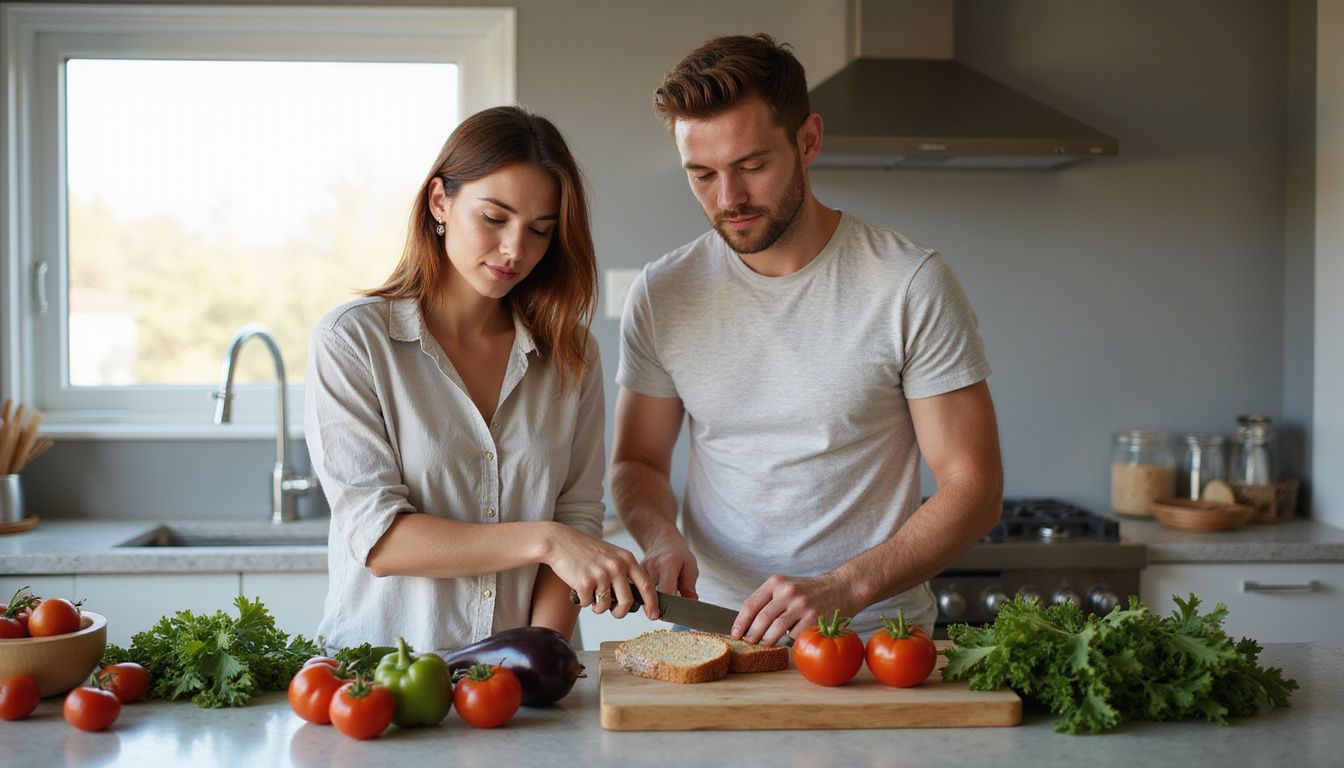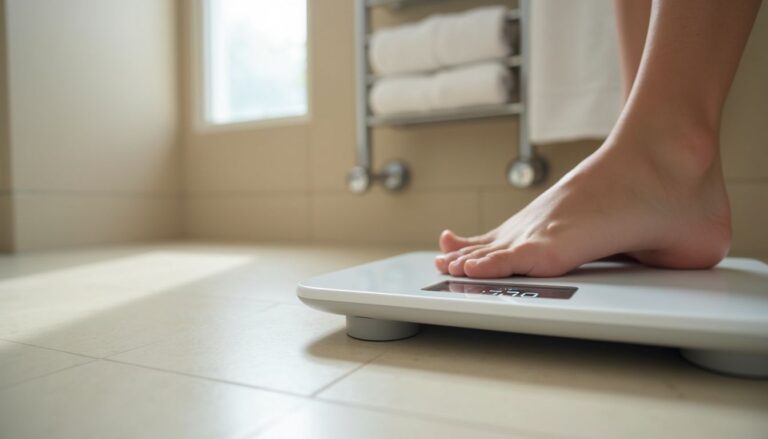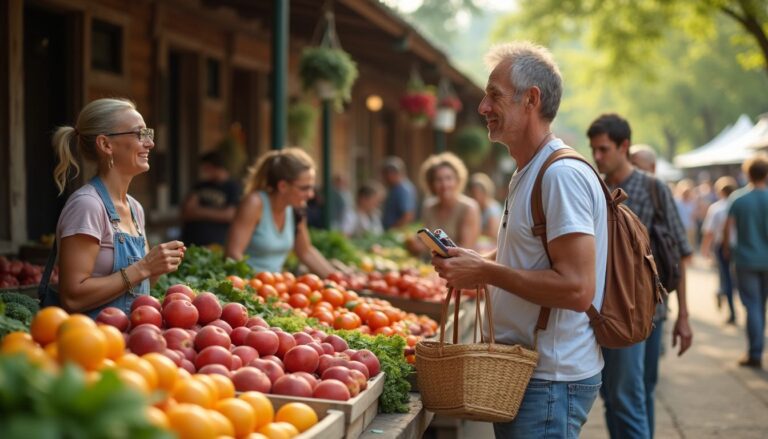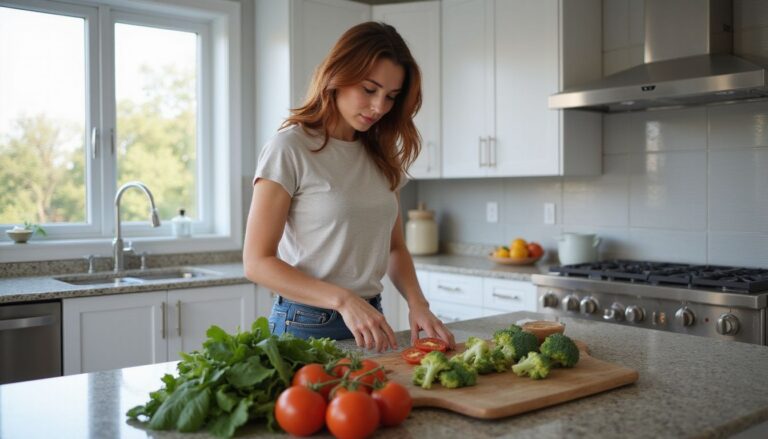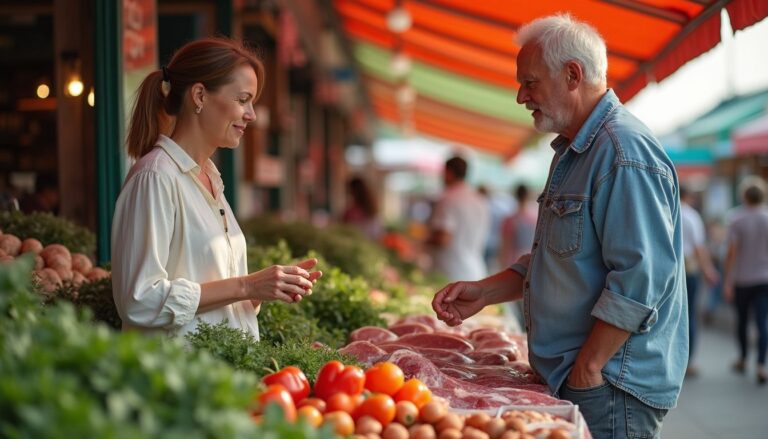Delicious Healthy Dinners For Weight Loss: Easy Recipes And Ideas
Our Nutrition Assistant AI Suite will transform your body. You will lose fat, get toned, and build muscle. Gain confidence and optimal health.
Healthy dinners can feel hard after a long day. The right choices make it easier. Research shows meals rich in protein and fiber increase satiety, which means you feel full longer and can manage calories better.
In this guide, you will find quick, healthy dinner recipes that fit weight loss goals without sacrificing taste. These ideas use lean protein, high-fiber vegetables, and whole grains, and many are ready in minutes or less.
Key Takeaways
- High protein and fiber meals, like grilled chicken or chickpea salads, increase fullness and help control calories for weight management (Jessica Ball, M.S., RD).
- Lean proteins such as salmon or ground turkey often deliver 24 to 40 grams of protein per serving while keeping most dinners under 500 calories.
- Whole grains like quinoa, farro, and brown rice add fiber that steadies blood sugar and helps you stay satisfied (USDA FoodData Central, Farro, FDC ID: 173706).
- Cut added sugars and swap heavy cream for lighter options like mascarpone or feta to reduce saturated fat without losing flavor.
- Fast options, such as Sheet-Pan Salmon with Bok Choy, can be ready in under 25 minutes and support healthy habits on busy nights.

Why Are Healthy Dinners Important for Weight Loss?
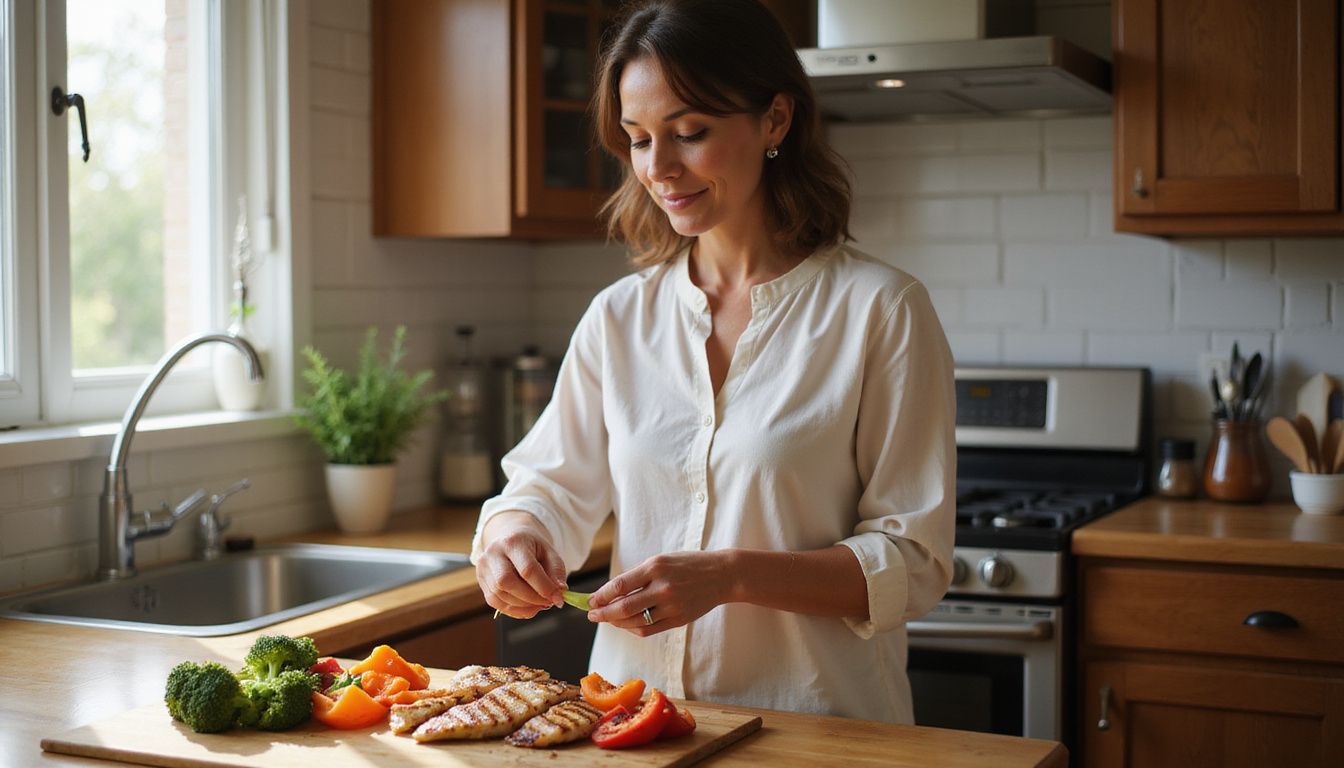
Healthy dinners help you manage daily calories while keeping energy steady. Lean proteins like chicken breast or salmon fillets increase satiety, the feeling of fullness that curbs late-night snacking.
Loading the plate with vegetables such as broccoli, cauliflower, and green beans adds fiber with very few calories. Dietitian Jessica Ball, M.S., RD, notes that high-fiber meals calm hunger and reduce the urge to graze at night.
Choosing nutrient-dense recipes trims added sugars and unhealthy fats, which often add extra calories. Balanced evening meals can also support a steady metabolism, the process your body uses to turn food into energy.
Focusing on lower calorie dishes that include plant-based proteins or whole grains supports long-term progress and a healthy weight.
How Can I Create Healthy and Delicious Dinners?
Simple ingredients, smart cooking methods, and good seasoning make healthy dinners taste great. The ideas below help you get dinner on the table fast, any night of the week.
How Do Lean Proteins Help in Weight Loss?
Lean proteins keep you full longer and help protect muscle during weight loss. Foods like chicken breast, salmon, shrimp, and turkey provide high protein with fewer calories per serving.
For example, Baked Salmon with Brussels Sprouts offers about 24 grams of protein per fillet. A serving of Ground Turkey Soup can give around 24 grams of protein in 1-1/2 cups. These healthy dinner recipes make it easier to control hunger and stick to a healthy diet.
Your body uses more energy to digest protein than it does for carbs or fats. That extra effort raises calorie burn slightly, even at rest. Easy weeknight choices such as skillet chicken, air fryer chicken thighs, or a simple salmon recipe put lean protein at the center of the plate.
Including these healthy recipes in a weekly plan supports muscle maintenance while encouraging fat loss.
Lean proteins curb your appetite and boost your calorie-burning power with every meal.
Pair lean proteins with colorful vegetables to build healthy dinners that support your weight loss journey.
What Vegetables Should I Include in My Dinner?
Vegetables add fiber, vitamins, and minerals without many calories. Bok choy brings mild crunch and cooks quickly, which makes it an easy sheet pan partner for salmon.
Steamed broccoli works well with grilled chicken and adds vitamin C and calcium. Tomatoes and basil brighten skillet bruschetta chicken. A chickpea salad becomes more refreshing with cucumber and red bell pepper. Red pepper provides antioxidants, and cucumber adds hydration and crisp texture.
Roast butternut squash, cabbage, or sweet potato for simple sides that feel hearty yet stay light. Stir these vegetables into soup recipes or grain bowls for variety across the week.
Which Whole Grains Are Best for Healthy Dinners?
Whole grains help steady blood sugar and boost fullness. Quinoa is a smart base. In a Quinoa Turkey Chili, a serving gives sustained energy through complex carbs, plus fiber and protein.
Farro stands out for chewy texture and fiber. In a Chickpea Grain Bowl, farro and chickpeas team up to ease evening cravings through longer-lasting fullness.
Barley, brown rice, and bulgur also fit well at dinner. A Mediterranean Turkey Skillet can include hearty grains to keep energy steady through the evening.
Choosing whole grains over refined options like white rice or standard pasta reduces spikes in blood sugar. The next step is trimming added sugars and unhealthy fats.
How Can I Limit Added Sugars and Unhealthy Fats?
Whole grains deliver fiber, but limiting added sugars and saturated fat pushes your healthy meal further. Try Sweet and Sour Chicken with Broccoli that uses less sugar than most takeout versions.
Skillet Bruschetta Chicken uses tangy balsamic for big flavor without a sugary sauce. In Creamy Spinach Pasta, a small spoon of mascarpone can replace heavy cream or large amounts of butter.
Use sautéing with olive oil instead of deep frying. Season lean proteins like skinless chicken breasts or shrimp with herbs and spices for bold taste. Choose strong cheeses like feta or parmesan in small amounts to keep taste high and saturated fat lower.
Fill the plate with spinach, zucchini noodles, carrots, and mushrooms. In my kitchen, swapping rice noodle bowls for Ginger-Soy Zucchini Noodles with Shrimp gave the same comfort with far fewer sugars and fats.
What Are Some Quick and Easy Recipes for Weight Loss?
Quick and easy dinners make healthy eating more realistic on busy nights. These nutritious dinner ideas use lean protein, vegetables, and whole grains to support a healthy weight.
Sheet-Pan Salmon with Bok Choy and Rice
Five ingredients make this sheet pan dinner simple: salmon fillets, fresh bok choy, a quick miso glaze, cooked rice, and sesame seeds. Arrange salmon and bok choy on one sheet pan, brush with the glaze, and roast at 400°F for about 15 minutes.
Salmon is a strong source of protein with less fat than many red meat mains. Bok choy adds crunch plus vitamins A and C.
I made this after work last week, and it took under 25 minutes from prep to table. Sprinkle sesame seeds for a toasty finish and serve over rice.
Chickpea Grain Bowl with Feta and Tomatoes
Craving a plant-forward meal after salmon? Build a chickpea grain bowl with farro, chickpeas, tomatoes, and feta. Farro supplies about 8 grams of protein and 5 grams of fiber per cooked cup. A half-cup of chickpeas adds roughly 7 grams of protein [1].
Tomatoes bring vitamin C, and feta gives calcium and savory taste without many calories. Finish with parsley or cilantro. A drizzle of olive oil, lemon juice, and black pepper boosts flavor without heavy sauces.
This bowl uses pantry staples and comes together fast. On busy weeknights, I sometimes swap chickpeas for white bean or lentil and still feel satisfied for hours.
[1] Nutritional values sourced from USDA FoodData Central: Farro (FDC ID: 173706) and Chickpeas (FDC ID: 16057).
Ginger-Soy Zucchini Noodles with Shrimp
For a lighter dinner, try zucchini noodles tossed with shrimp in a quick ginger-soy sauce. Spiralized zucchini replaces pasta to cut carbs and keep the dish gluten-free.
Precooked shrimp shortens cook time on your busiest evenings. The sauce adds bold flavor without much sodium or fat.
Each serving lands under 300 calories and stays high in protein. Ginger adds zing and may aid digestion, as reviewed in recent research [1]. I prep zucchini noodles in advance so dinner takes just minutes to finish.
[1] White B, et al., Effects of Ginger on Human Health: A Comprehensive Review, Food Science and Nutrition Journal, 2022
Spicy Black Bean and Salsa Bowl
Want a filling plant-based meal? Warm black beans with chili powder and cumin in a nonstick frying pan. Serve over brown rice and top with chunky salsa.
Add avocado slices, diced tomatoes, lime juice, onion, and cilantro. These toppings add healthy fats and vitamins while keeping calories in control.
This bowl uses common pantry items like black beans, corn salsa, and rice. Vegetarian tacos with similar ingredients can deliver about 17 grams of protein and around 413 calories per serving, showing you can eat healthy and feel full at dinner.
High-Protein Dinner Ideas to Support Weight Loss
High-protein dinner ideas, from lean chicken to hearty soups, help you stay satisfied and protect muscle. Explore more inspiration below.
Grilled Chicken with Steamed Broccoli
Grilled chicken is a classic lean protein. A 4-ounce portion provides about 35 grams of protein with under 200 calories and less than 3 grams of fat. Steamed broccoli adds fiber, vitamin C, and potassium with few calories.
Season chicken with garlic, lemon juice, and black pepper, or add a pinch of chili powder. Grilling keeps meat juicy while building light char.
I often choose this after a busy day. It is quick, satisfying, and aligns with weight loss goals.
Lentil and Vegetable Soup
Lentil and Vegetable Soup offers plant-based protein and fiber in one pot. Tomato-Garlic Lentil Bowls deliver roughly 21 grams of protein per 3/4 cup serving.
Carrots, spinach, and tomatoes add color and nutrients that support fullness. Spices like turmeric and chili powder bring warmth and depth.
Top each bowl with a spoonful of Greek yogurt for creaminess with less saturated fat. I sometimes serve it with a slice of whole grain bread for a heartier meal.
Turkey and Quinoa Stuffed Bell Peppers
Ground turkey and quinoa create a satisfying filling inside bell peppers. Two halves can provide around 40 grams of protein per serving, based on a popular home recipe.
Turkey keeps fat lower than beef, and quinoa adds fiber and minerals. The dish feels special yet simple enough for a weeknight dinner party.
Cook turkey, stir in cooked quinoa, tomato sauce, and a pinch of chili powder. Fill the peppers and bake until tender. Serve with a green salad or steamed broccoli to round out the meal.
Baked Salmon with Brussels Sprouts
Baked salmon with Brussels sprouts combines lean protein and fiber-rich vegetables. Many salmon recipes provide 19 to 24 grams of protein per serving.
Toss sliced Brussels sprouts with olive oil and roast them on the same sheet pan as the seasoned salmon for easy cleanup. The sprouts turn crisp-tender while the fish stays moist.
This makes a reliable dinner for two and works well for meal prep. If you need a vegetarian option another night, chickpeas paired with fresh vegetables can be just as satisfying.
Vegetarian and Plant-Based Dinner Recipes
Plant-forward dinners help you explore new flavors while supporting weight loss. Tofu, sweet potatoes, and mushrooms are great swaps for meat in many dinner recipes.
Chickpea Salad with Cucumber and Red Bell Pepper
This no-cook dinner needs only canned chickpeas, avocado, cucumber, red bell pepper, and a light vinaigrette. It delivers around 14 grams of plant-based protein per serving.
Chickpeas add fiber that supports fullness. Avocado provides healthy fats that help you stay satisfied.
Garnish with parsley or cilantro for more flavor without extra calories. Serve chilled on its own or tucked into crisp lettuce leaves for a fresh, sandwich-style wrap.
Zucchini Pizza with Cherry Tomatoes
Try a low-carb take on pizza that uses zucchini as the base. Each serving is about 142 calories with roughly 11 grams of protein.
Bake the zucchini crust, then top with cherry tomatoes and mozzarella for classic pizzeria flavor. Homemade zucchini pizza lets you limit added fats and keep portions in check.
Finish with fresh basil or a light pinch of chili pepper for brightness.
Sweet Potato and Black Bean Chili
Sweet Potato and Black Bean Chili cooks in about 20 minutes and serves four. Each portion lands near 400 calories with around 11 grams of protein.
Sweet potatoes build a creamy texture and add potassium and fiber. Black beans supply additional protein for lasting fullness.
I made this after a long day and loved the leftovers for lunch. Add more heat with chili powder and chiles, or top with cilantro for a fresh finish.
Cauliflower Fried Rice with Tofu
Grated cauliflower replaces white rice for a lighter stir fry. Sauté tofu until golden, then add the cauliflower “rice” and mixed vegetables like carrots, peas, and bell peppers.
Stir fry with low-sodium soy sauce and a touch of sesame oil. Every cup of cauliflower has about 25 calories and roughly 2 grams of fiber. Tofu provides all essential amino acids for a complete plant protein.
This dish gives the feel of classic stir frying with fewer carbs and calories. For more low-carb ideas like Garlic Butter Shrimp with Zoodles or Lemon Herb Chicken with Green Beans, keep reading.
Low-Carb Dinner Options for Weight Loss
Low-carb dinners can lower calories while keeping meals satisfying. Seafood, chicken, and vegetable-based “pasta” are helpful go-to choices.
Garlic Butter Shrimp with Zoodles
Garlic Butter Shrimp with Zoodles cooks fast and fits low-carb goals. Sauté shrimp with garlic butter, then toss with spiralized zucchini for a pasta-style dish without heavy starch.
One serving often lands near 250 calories, about 25 grams of protein, and roughly 6 grams of net carbs. That balance works well for weight loss plans.
I made it during a hectic week and finished in under twenty minutes. Add fresh herbs, cherry tomatoes, or a sprinkle of parmesan for extra flavor.
Lemon Herb Chicken with Green Beans
For a fast dinner, cook lean chicken tenders in a nonstick skillet with lemon and herbs. A typical serving offers around 25 grams of protein with under 8 grams of fat, based on USDA data.
Fresh green beans add fiber and crunch with few calories. Swap mashed potato or rice for extra vegetables to lower total calories even more.
The result tastes bright and satisfying without feeling heavy.
Beef Stir Fry with Vegetables
Beef stir fry with vegetables gives a heartier option that stays balanced. Use lean beef strips and colorful vegetables like bell peppers, broccoli, snap peas, and carrots to add fiber and vitamins.
A serving usually lands around 250 to 300 calories with about 26 grams of protein and 15 grams of carbs, depending on vegetables used. Cook with olive or avocado oil for a lighter fat profile.
Season with ginger, garlic, soy sauce, and a small amount of mustard for depth without added sugar. Serve as is or with cauliflower rice for fewer carbs.
Spaghetti Squash with Pesto and Cherry Tomatoes
Roast spaghetti squash until tender, then pull strands with a fork. Toss with pesto and halved cherry tomatoes for a bright, low-carb dinner.
This dish is gluten-free, high in fiber, and lower in calories than traditional pasta. My family likes it on busy weeknights, and leftovers reheat well.
For pasta lovers who want less starch at night, this option delivers comfort and flavor in a lighter package.
One-Pan and Sheet-Pan Dinner Recipes
One-pan and sheet pan dinners save time and reduce cleanup. They keep healthy eating realistic on busy evenings.
Sheet-Pan Chicken Fajitas
Toss sliced chicken breast, bell peppers, and onions with olive oil and fajita spices on one sheet pan. Bake until the chicken is cooked and the vegetables are tender.
A pineapple twist adds natural sweetness without syrups, and each serving can deliver around 31 grams of protein. Serve with whole wheat tortillas or on brown rice for extra fiber.
I made sheet-pan chicken fajitas last month, and the bright flavors won over the whole table.
One-Pan Garlic Butter Salmon and Asparagus
Cook salmon and asparagus together for a fast dinner with easy cleanup. Garlic butter adds rich taste while keeping the recipe light.
Salmon gives lean protein, and asparagus brings fiber and micronutrients. Add lemon juice, mustard, or herbs before baking for more flavor without extra calories.
Sometimes I include cherry tomatoes or serve it over brown rice to make the plate more filling.
Skillet Pork Chops with Cabbage
Skillet pork chops with cabbage offer a high-protein main dish that comes together quickly. One serving can provide about 37 grams of protein.
Cooking everything in one pan blends flavors and simplifies cleanup. A small spoon of mustard or fresh herbs can finish the dish without many calories.
I often swap in asparagus during spring for a seasonal twist.
Roasted Veggie and Quinoa Bowl
Spread carrots, peppers, and zucchini on a baking sheet. Toss with olive oil, black pepper, and a touch of mustard, then roast at 425°F for about 25 minutes.
Cook quinoa while the vegetables roast. One cup of cooked quinoa has about 8 grams of protein and 5 grams of fiber, according to USDA data.
Add feta or chopped herbs for flavor. Top with roasted chickpeas or a sliced boiled egg to boost protein. After a workout, this bowl kept me satisfied until breakfast the next day.
For more variety, add cooked chicken or tuna. This one-pan approach works well for meal prep and healthy dinners.
What Are the Best Tips for Meal Prepping Healthy Dinners?
Meal prepping turns good intentions into ready-to-eat dinners. A simple plan, versatile ingredients, and smart storage make the difference.
How Do I Plan Meals for the Week?
Start with trusted collections like “24 Low-Cholesterol Dinner Recipes” and “44 Healthy Potluck Recipes.” Choose a mix of proteins, such as ginger chicken, baked salmon, or a hearty lentil soup.
Pair each protein with a whole grain like brown rice or quinoa and colorful vegetables. Map your dinners for each day, then make a shopping list that includes items like coconut milk for curry, eggs for extra protein, and fresh herbs for garnish.
Prep ingredients on the weekend. Chop vegetables, cook a pot of grains, and marinate proteins. Reuse components across multiple dinners, for example roast chicken can anchor both a salad and a main dish later in the week.
What Are Versatile Ingredients to Use?
Chickpeas, farro, and quinoa fit many healthy dinner recipes. Add chickpeas to a grain bowl with feta and tomatoes, or fold quinoa into a roasted vegetable bowl for extra protein and fiber. Farro brings chew and B vitamins to salads.
Lean meats like chicken breast work across sheet pan chicken fajitas, chicken soup, or chicken stew. Eggs are flexible for breakfast-for-dinner or baked casseroles.
Vegetables such as bok choy, zucchini, and Brussels sprouts move easily between stir fry, pizza toppings, and side dishes. These staples keep meal prep simple while supporting weight loss and balanced nutrition.
How Should I Store Portions for Easy Reheating?
Use airtight, microwave-safe, BPA-free containers. Label each with the dish name, like “chickpea grain bowl” or “sheet-pan salmon,” plus the date.
Divide meals into single portions so you can grab, heat, and eat. Stack containers to save space in the fridge or freezer.
Keep sauces on the side to preserve texture after reheating. Store cooked grains and fresh vegetables separate from sauces or garnishes. In my experience, this prevents soggy food and keeps flavors bright, especially for meals that include eggs or bacon.
Place older containers toward the front so nothing gets lost. Keeping portions visible helps you stay on track all week.
How Do Healthy Dinners Benefit Weight Loss?
Healthy dinners help you stay full, protect muscle, and keep calories consistent. That combination supports steady progress over time.
How Do Healthy Dinners Keep You Full and Satisfied?
Meals rich in fiber and lean protein, like a Chickpea Grain Bowl with Feta and Tomatoes or Chili-Stuffed Poblano Peppers, help control hunger through the evening. Dinners near 500 calories with about 40 grams of protein often deliver long-lasting satiety.
A protein patty, plenty of vegetables, or whole grains such as brown rice digest more slowly. That slow digestion helps your brain receive signals of fullness.
Fresh garnish or a light glaze, such as spicy mustard or tomato salsa, boosts flavor without a lot of sugar or fat. Balanced meals that combine protein, healthy fats, and complex carbs work together to limit cravings.
How Do They Support Muscle Building and Fat Loss?
Healthy dinners support muscle growth and repair while you reduce body fat. Lean proteins like turkey, chicken, or fish help muscles recover after activity and keep you satisfied.
Pair proteins with roasted vegetables and whole grains to raise nutrients without adding many calories. Use herbs as garnish instead of heavy toppings.
Right-sized portions make it easier to reach fat loss goals while staying strong.
How Do Healthy Dinners Promote Balanced Nutrition?
Balanced dinners deliver key macronutrients, which are protein, carbs, and fats. For example, an Apple Sausage Salad with Cinnamon Vinaigrette can land near 404 calories per serving with 23 grams of fat and 14 grams of protein, offering energy and staying power.
Another example is Slow-Cooked Moroccan Chicken that packs around 42 grams of protein per serving. Lean protein supports fullness. Whole grains and a range of vegetables add fiber, vitamins, and minerals.
Use fresh herbs or a light mustard sauce to add flavor without many calories. Simple glazes with whole ingredients keep meals tasty and nutritious.
How Do They Help Maintain Consistent Calorie Intake?
Low-calorie dinner recipes under 500 calories make tracking easier. Lean proteins, whole grains, and plenty of vegetables fill the plate without overshooting your calorie target.
Measure portions ahead and keep sauces modest. Garnish with citrus or herbs to add flavor without extra oil or sugar. Planning meals in advance is linked with steadier calorie intake and better weight management outcomes (CDC, 2022; Nutrition.gov meal planning guides).
Consistency helps you progress, one dinner at a time.
Conclusion
Delicious, healthy dinner recipes can make weight loss simpler and more enjoyable. Quick favorites like skillet bruschetta chicken or creamy lemon and dill chicken help you stay on track on busy weeknights.
Lean protein, whole grain sides, colorful vegetables, and lighter sauces keep calories in check while delivering flavor. Save your favorite healthy dinners so planning gets easier every week.
This information supports general wellness and is not medical advice. If you have health conditions or unique nutrition needs, speak with a registered dietitian or your healthcare provider.
FAQs
1. What types of dishes support healthy weight loss for dinner?
Lean protein meals, such as grilled poultry or fish, paired with steamed vegetables and whole grains form the base of many effective weight loss dinners. These dishes provide essential nutrients while keeping calorie counts low.
2. How can I use garnish to make my healthy dinners more appealing?
Adding fresh herbs or citrus zest as a garnish enhances both flavor and presentation without adding extra calories. A well-chosen garnish can also increase visual appeal, making nutritious food more enjoyable to eat.
3. Is mustard a good condiment choice for weight loss recipes?
Mustard is low in calories and contains no added sugar when compared to other condiments like mayonnaise or ketchup. Using mustard on sandwiches or as part of a salad dressing adds flavor without increasing fat content.
4. Can glaze be used in healthy dinner recipes for those trying to lose weight?
Yes; using a light glaze made from ingredients such as balsamic vinegar or reduced-sodium soy sauce can add taste without excess sugar or fat. Applying glaze sparingly helps maintain nutritional balance while enhancing the dish’s overall flavor profile.
Summary: Healthy dinners that promote weight loss often feature lean proteins, vegetables, and whole grains prepared with minimal added fats or sugars. Garnishes like herbs boost taste and appearance; mustard offers a flavorful yet low-calorie condiment option; glazes applied lightly contribute additional flavor while supporting dietary goals (Harvard T.H. Chan School of Public Health). Personal experience shows that small changes in preparation methods lead to lasting results over time.

